8,000 Days
I write this from a soccer field in Winchester watching Melanie’s soccer team compete for first place in her conference:
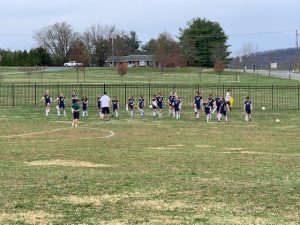
Right now, life is fractioned between Meridian, moving, family, clients…all at the same time it feels. Clients and friends older and wiser than me have advised that this too shall pass…and while the days may be long, the years are short.
Along those lines, the AgeLab at MIT was created in 1999 to study American demographics—particularly what aging means and what solutions improve the quality of life of older Americans. The AgeLab found that our lives are typically broken down into four 8,000 day periods:
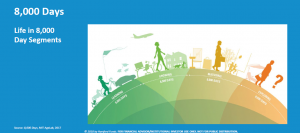
It hurts my pride to acknowledge it, but I guess I’m moving from the ‘growing’ to ‘maturing’ stage…
Interestingly, the AgeLab has been focusing on what those last 8,000 days look like as Americans are living longer and longer. Dr. Joe Coughlin, Director of the MIT AgeLab notes: “We have a longevity paradox. Now that we have achieved what humankind has tried to achieve since it has walked—living longer—we really don’t have a good idea of what to do with all of that additional time.”
While retirement used to just be a short period of leisure before serious health impairments, now AgeLab research has delineated four distinct stages of retirement:
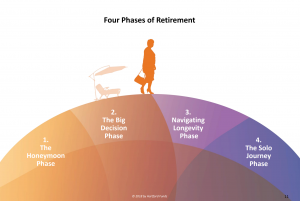
- The Honeymoon Phase—this is what most of us picture as retirement—carefree lifestyle, no demands on our time, the ability to pursue new hobbies, new experiences, etc. What this phase is really characterized by is managing ambiguity—it is a time of defining your life (and identity) outside of work. Retirees in this stage are often retuning to work, partially for income, but partially to live with purpose and contribute meaning to others.
- The Big Decision Phase—after the initial honeymoon, retirees begin to be faced with large life decisions—where to settle, how to age in place, what family and friend connections need to be maintained, what brings meaning and purpose to you:
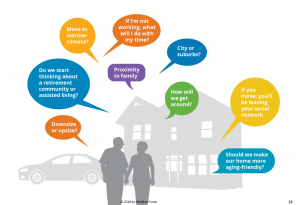
- Navigating Longevity Phase—this phase is marked with managing health concerns. The importance of maintaining social connections becomes even more important as mobility is challenged. Figuring out who to handle items that AgeLab calls “administrivia” is also a challenge as the need for caregiving increases:
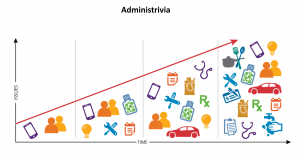
- The Solo Journey—the surviving spouse has a longer path of rebuilding a retirement life alone. This phase is marked by revisiting the first three phases. Throughout this phase, maintaining social networks is of primary importance. Studies have shown loneliness has a similar impact on mortality rates as smoking 15 cigarettes a day.
As financial planners, as we read this research and study the AgeLab finidngs, we realize the conversation about retirement is deeper than simply having enough money. Instead retirement is a rich and complex 8,000 days that demand a flexible and creative plan. We see our clients moving through each of these phases, and we are glad to be able to help find solutions to the unique challenges of retirement.
And while each phase of retirement has its own challenges, Business Insider finds that there are also precious rewards—the peak in life satisfaction, body image security, and psychological well being…things worth marching towards!